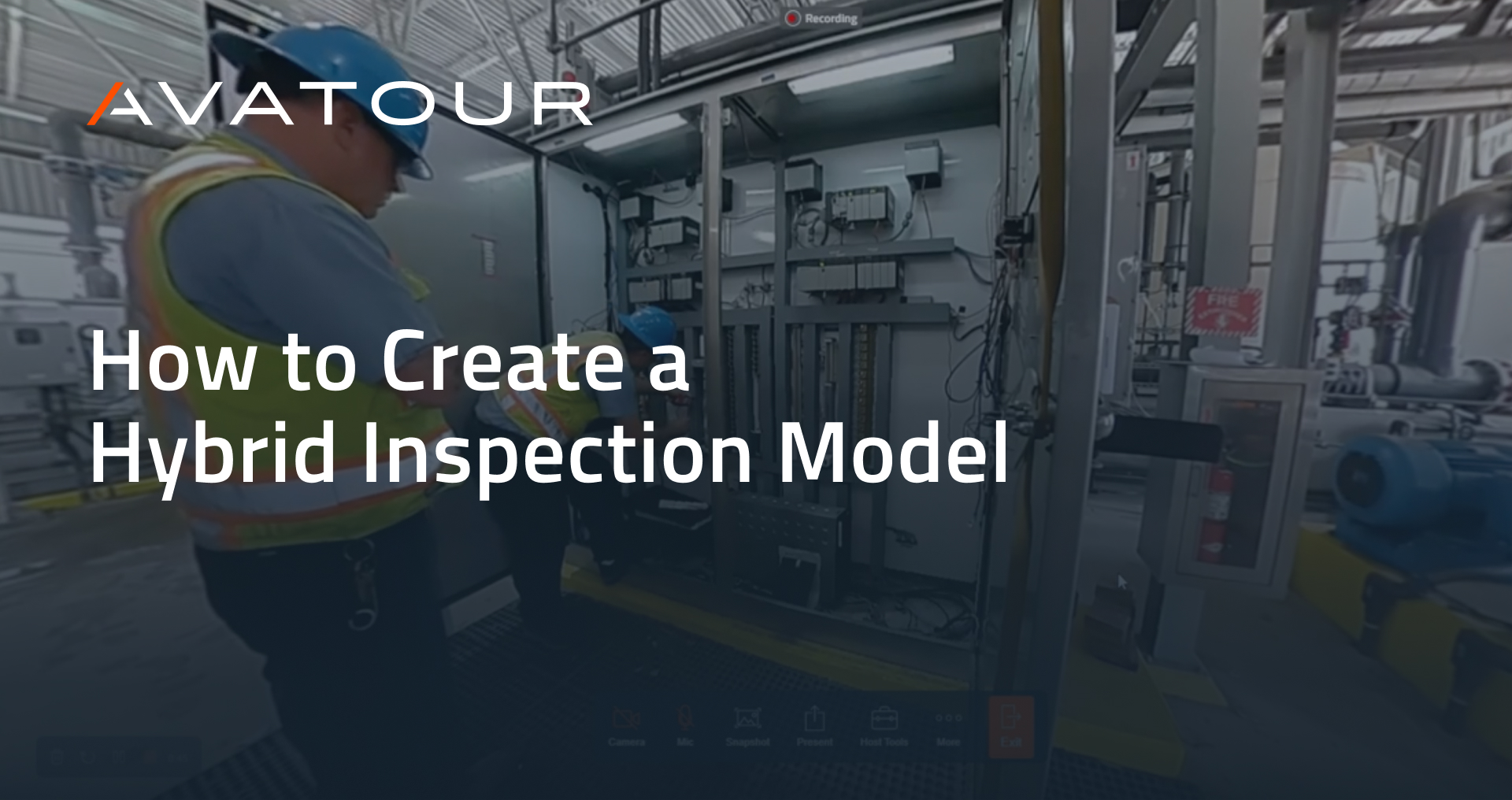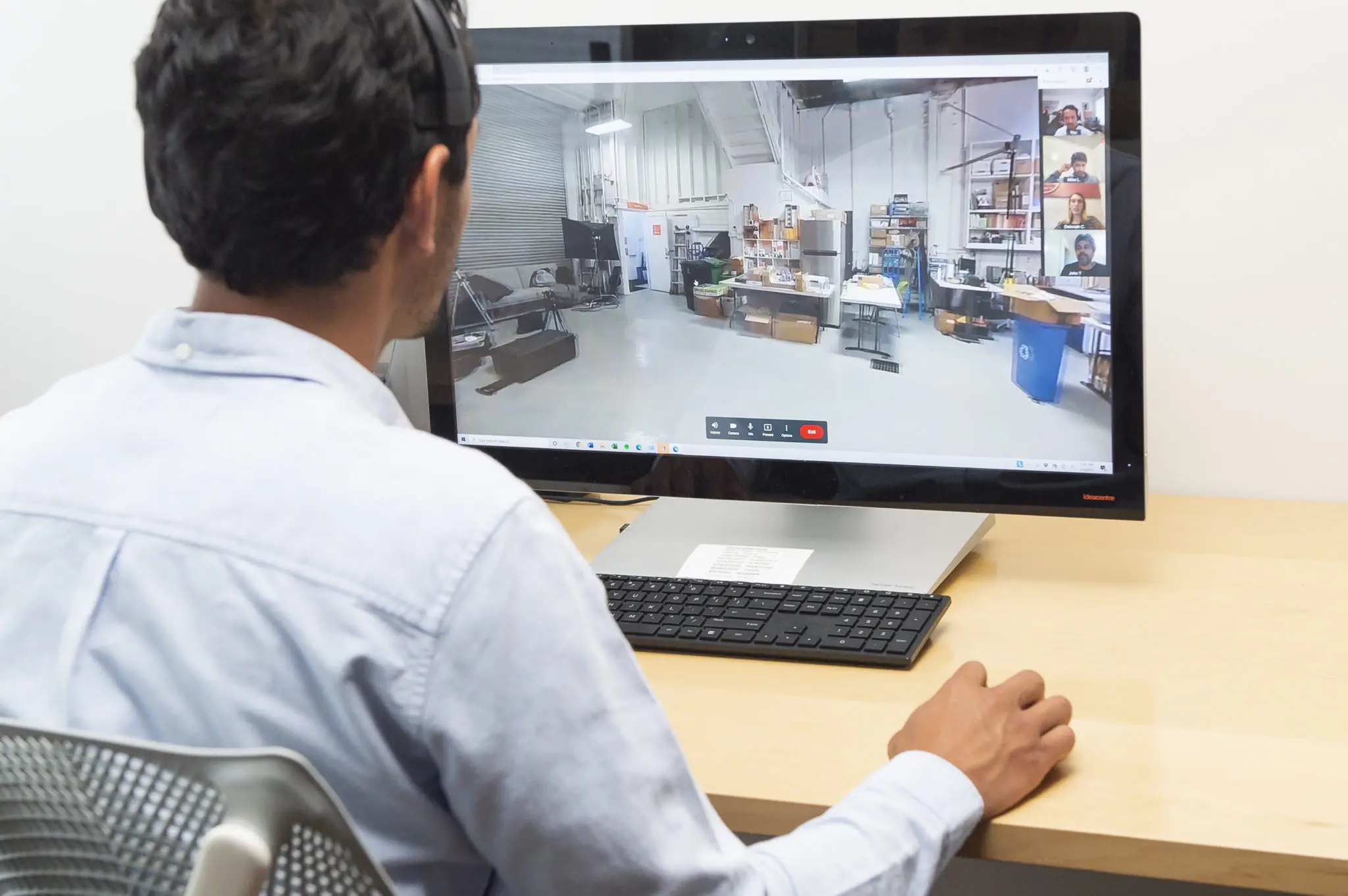The key essence of a hybrid inspection model lies in its ability to leverage innovative remote inspection technologies while continuing to maintain a regular cadence of in-person site visits. This model empowers organizations to embrace efficiency, enhance flexibility, and maintain a robust inspection framework in an ever-changing world.


A Hybrid Inspection Model strategically combines remote and on-site inspections to optimize resource utilization, and streamline the inspection process. The hybrid model represents a shift from traditional assessment and evaluation methodologies, as a result of the mass adoption of fully remote inspections during the Covid-19 pandemic.
Featured Article: Remote Inspections 101: A Comprehensive Overview of Remote Inspections [2024]
The key essence of a hybrid inspection model lies in its ability to leverage innovative remote inspection technologies while continuing to maintain a regular cadence of in-person site visits. This model empowers organizations to embrace efficiency, enhance flexibility, and maintain a robust inspection framework in an ever-changing world.

Implementing a Hybrid Inspection Model requires a thoughtful evaluation of the organization's operations to determine which audits and inspections can be conducted remotely. A strategic approach involves adopting a risk-based model that prioritizes areas where remote assessments are not only feasible but also beneficial.
Here are a few key factors to consider in the decision-making process:
Define clear and comprehensive criteria for risk assessment. Consider factors such as the criticality of the process or system being inspected, the complexity of the inspection requirements, and the impact of potential errors or non-compliance.
Evaluate the sensitivity of the data involved in audits and inspections. Determine if the information can be securely handled in a remote setting without compromising privacy or regulatory compliance. Classify data based on its level of sensitivity and establish protocols accordingly.
Assess the organization's technological infrastructure and the availability of tools that support remote audits and inspections. Ensure that the technology can effectively replicate the on-site inspection experience, providing necessary data and insights without compromising accuracy.
Consider the regulatory landscape governing audits and inspections within the industry. Identify any specific regulations that may dictate the necessity of on-site assessments. Ensure that remote inspections align with regulatory requirements to avoid potential legal implications.
Review the historical performance and compliance records of the processes or systems under consideration. If a particular area has consistently demonstrated adherence to standards and regulations, it may be a candidate for remote inspections, freeing up resources for more critical assessments.
Evaluate the level of communication and collaboration required during inspections. If the inspection process involves extensive interactions, hands-on demonstrations, or real-time problem-solving, on-site inspections may be more suitable. Conversely, if remote collaboration tools can facilitate effective communication, remote assessments become more viable.
Assess the training and skill set of inspection teams. Ensure that teams designated for remote audits are well-equipped with the necessary technical proficiency and communication skills. Provide training programs to enhance their capabilities for effective remote inspections.
Implement a continuous monitoring system to assess the ongoing feasibility and effectiveness of remote inspections. Regularly review and adjust the risk-based model based on insights gained from both successful and challenging remote assessments.
Implementing a Hybrid Inspection Model involves a strategic and phased approach.
Begin the implementation process with a comprehensive needs assessment, systematically identifying areas where remote inspections can deliver maximum value, and areas where an in-person visit is still preferred. Consider the nature of the inspection, regulatory requirements, geographical spread of the operation, and so on.. Gauge the level of risk associated with each type of audit or inspection, and start by prioritizing those that are lower risk and more amenable to remote assessments.
Invest in technologies that satisfy the requirements of your remote assessments. Since the Covid pandemic, a number of different types of remote inspection solutions have entered the market. Carefully evaluating these technologies is a crucial step in successfully implementing a hybrid inspection model.
Ensure seamless integration with existing systems or procedures, and provide necessary training to both remote and on-site personnel on using these tools effectively.
Initiate pilot programs by identifying specific areas or types of inspections to test the viability and effectiveness of remote inspections on a smaller scale. This will allow your organization to assess adaptability to different operational contexts and identify potential challenges that may arise.
Collect feedback from inspectors, stakeholders, and relevant departments during these pilot programs to understand practical implications, address unforeseen issues, and refine the implementation strategy.
Develop robust data governance policies to manage and protect information collected during inspections. Clearly define protocols for data storage, sharing, and disposal to ensure compliance with privacy and security standards.
Implement measures to safeguard sensitive information, ensuring transparency in data handling processes. Regularly audit and update data governance policies to align with evolving industry regulations and best practices.
Establish mechanisms for continuous improvement based on feedback, lessons learned, and emerging technologies. Foster a culture of continuous learning, and adapt the hybrid model based on organizational changes, industry trends, and feedback from ongoing inspections.
Flexibility and adaptability are key to the sustained success of a hybrid inspection model.
In conclusion, the adoption of a Hybrid Inspection Model represents a pivotal shift in inspection methodologies, signifying an organization's commitment to adaptability and innovation. The strategic implementation, as outlined in this article, serves as a roadmap for organizations navigating this transformative journey.
Remember, the success of the hybrid model lies not only in its initial implementation but in the organization's ongoing ability to learn, adapt, and optimize, ensuring a dynamic and effective inspection framework that meets the challenges of tomorrow.
March 25, 2024
Discover key lean manufacturing terms organized by core principles, waste reduction techniques, tools, and culture. Understand how Avatour's 360° capture technology enhances lean practices by enabling remote Gemba walks and continuous improvement, fostering efficiency and excellence in manufacturing. This glossary offers a clear guide to lean terminology, helping you implement lean principles effectively.
March 18, 2024
Learn how to implement lean manufacturing in your organization with a step-by-step plan for the first year, including foundational lean techniques and more advanced implementations. Discover how Avatour's innovative 360° technology can help overcome challenges at each stage, enhancing training, Gemba walks, and continuous improvement
March 12, 2024
An overview of the considerations and challenges we faced while developing Avatour for the Apple Vision Pro, illustrating the current gap between promise and reality, and how we managed to close it. Includes some detail on WebXR and Unity implementation for the AVP.